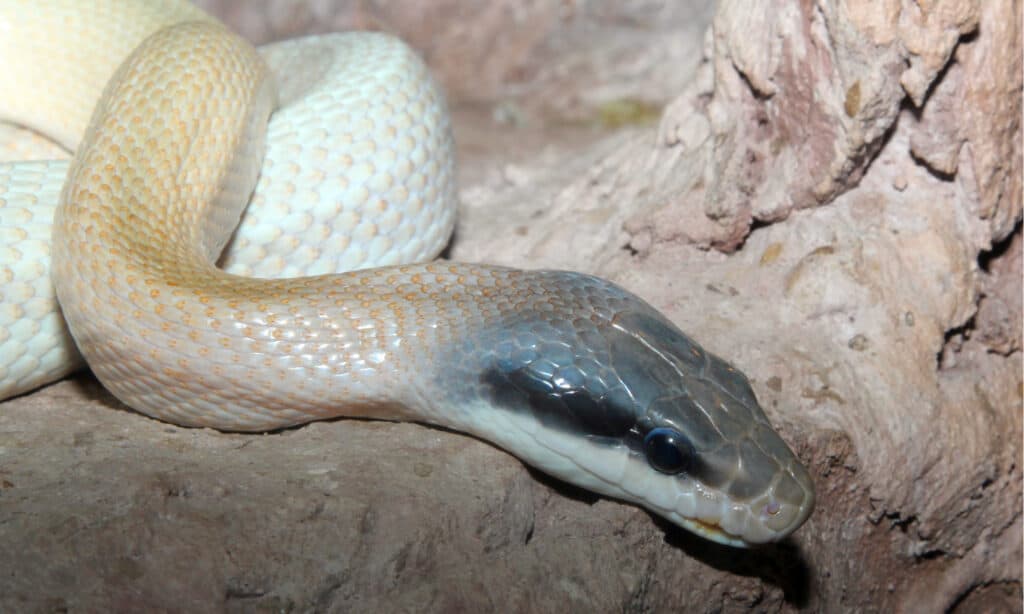Introduction
Australia, a land of diverse wild animals, is home to lots of interesting creatures, consisting of snakes that can motivate both wonder and fear. Among these serpents is the tiger snake, known for its striking look and track record as a poisonous killer. Consequently, one concern frequently occurs: Are tiger snakes venomous? This write-up will certainly look into the misconceptions and truths surrounding tiger serpents, their environment, habits, medical implications of their attacks, and much more.
Are Tiger Snakes Venomous?
When it pertains to the concern of whether tiger serpents are venomous, the response is a definite yes. Tiger snakes (Notechis scutatus) are undoubtedly poisonous and rank amongst the most dangerous snakes in Australia. Their poison includes potent neurotoxins that can result in paralysis and even fatality if not treated quickly.

While deaths from tiger snake attacks have actually ended up being less common as a result of advancements in medical treatment and antivenom availability, this does not diminish the need for care when coming across these reptiles. The possible effects of a tiger snake bite include extreme discomfort at the site of the bite, swelling, queasiness, difficulty breathing, and neurological signs such as weakness or paralysis.
Types of Tiger Snakes
In Australia, there are a number of recognized subspecies of tiger serpents:

- Eastern Tiger Snake (Notechis scutatus): Discovered mainly in southeastern Australia. Tasmanian Tiger Serpent (Notechis scutatus): A subspecies located only in Tasmania. Black Tiger Snake: Known for its darker coloration.
Each of these varieties has variants in size and behavior yet shares comparable poison characteristics.
The Habitat of Tiger Snakes
Where Do They Live?
Tiger snakes are versatile creatures found throughout various environments throughout Australia. They usually live in seaside regions however can also be discovered in wetlands, swamps, waterfronts, and forests. Their preference for moisture-rich environments makes them adept swimmers; hence they flourish near water bodies like lakes or marshes.
Geographical Distribution
- Southeastern Coast: Home to Eastern tiger snakes. Tasmania: Controlled by Tasmanian tiger snakes. Northern Regions: Where you could experience less commonly seen variants.
Habitat Preferences
Tiger snakes favor locations with abundant cover where they can conceal from killers while hunting for victim. They commonly search little creatures, frogs, birds, and even fish-- making them flexible hunters within their eco-friendly niche.
The Composition of a Tiger Snake
Physical Characteristics
Tiger snakes possess distinct physical characteristics that differentiate them from various other Australian reptiles:
- Coloration: Typically grouped with yellow or light stripes on a dark background. Size: They can grow up to 2 meters long; nonetheless, average sizes range in between 1.2 to 1.5 meters.
The distinct coloration serves both as camouflage versus predators and while tracking target in their all-natural habitat.
Behavioral Traits
Understanding the behavioral patterns of tiger snakes is critical for those living within their geographical variety:
- Nocturnal Activity: They are primarily energetic in the evening however might additionally hunt throughout the day. Defensive Behavior: When intimidated, tiger snakes may hiss loudly or flatten their bodies-- a warning sign indicating they feel cornered.
Tiger Serpent Bite Symptoms
If bitten by a tiger snake, people ought to watch for certain signs and symptoms that materialize not long after:
Severe localized pain Swelling around the bite area Nausea or vomiting Difficulty breathing Neurological signs and symptoms such as muscle weaknessIt's critical never ever to undervalue these indicators; instant medical attention is vital following any snake bite incident.
First Aid for Serpent Bites
Immediate Activities After a Bite
Knowing exactly how to react swiftly can conserve lives when taking care of prospective serpent attacks:
Stay tranquility and still-- movement raises poison spread. Call emergency services immediately. Keep the affected arm or leg incapacitated below heart level. Avoid cutting or drawing out venom; this old other halves' story can get worse conditions. Remove tight apparel or jewelry near the bite site.First Aid Set Fundamentals for Snake Bites
A well-stocked first aid set ought to include things particularly useful in treating serpent bites:
|Product|Objective|| --------------------------------|-----------------------------------------------|| Sterile bandages|To cover injuries|| Antibacterial wipes|To clean around bite area|| Emergency contact numbers|For fast access throughout emergency situations|| Compression plaster|To aid incapacitate influenced arm or leg|
Proper preparation can make all the difference when an emergency strikes.
Fact vs Misconception About Tiger Snakes
Myth 1: All Snakes Are Aggressive
Contrary to usual belief, not all serpent varieties display aggressiveness towards people. In fact, several prefer to pull back than challenge us.
Myth 2: A Bite Constantly Leads to Death
While deadly bites do take place-- many thanks Local Effects mostly to delayed treatment-- the majority of attacks are non-fatal if treated immediately with antivenom.
Myth 3: You Can Draw Out Venom
This commonly held belief is false; attempting to draw out venom just increases complications rather than easing them!
FAQs
1. Are baby tiger snakes extra dangerous than adults?
Baby tiger snakes might have much less poison than grownups however often provide attacks readily because of being even more frightened.
2. The length of time does it consider signs to show up after a bite?
Symptoms usually show Venomous snake up within mins yet can occasionally take hours relying on elements like private health and wellness conditions.
3. What ought to I do if I see a tiger snake?
Maintain distance! Avoid prompting it; most encounters finish without event if you value their space.

4. Is there an antivenom available for tiger snake bites?
Yes! Antivenom exists especially developed for treating health problems caused by tiger snake attacks-- it's vital to look for professional clinical assistance immediately!
5. Can I maintain a tiger serpent as a pet?
Keeping any type of wild snake types presents considerable risks due mostly to their reproduction practices & & nutritional requirements-- it's ideal left in nature!
6. Just how widespread are serpent bites in Australia?
Australia sees hundreds of snakebite cases annual; however deaths have reduced substantially thanks mainly due boosted recognition & & medical care access!
Conclusion
In final thought, recognizing whether "Are Tiger Snakes Venomous?" lugs considerable ramifications for personal safety and security when interacting with these remarkable reptiles belonging to Australia's diverse communities can not be overemphasized!
Arming ourselves with knowledge about these animals-- from their environments and behaviors down through efficient emergency treatment practices-- empowers us toward much safer coexistence alongside wildlife while mitigating dangers connected with unintentional encounters!
By cultivating education about our atmosphere's complexities-- not just concentrating entirely on concern-- we pave pathways in the direction of far better recognition & & Endangered venomous snakes Australia preservation efforts profiting both mankind & & nature alike!